Spray bleaching shirts is an easy way to personalize your wardrobe for a unique fashion statement. Using a spray bottle to apply bleach over a pattern can quickly customize a t-shirt, flannel shirt or jeans into a custom work of art!
Bleach spraying shirts is a fun craft especially great for tweens and teens, but adults will love this up fashion upcycle, too!
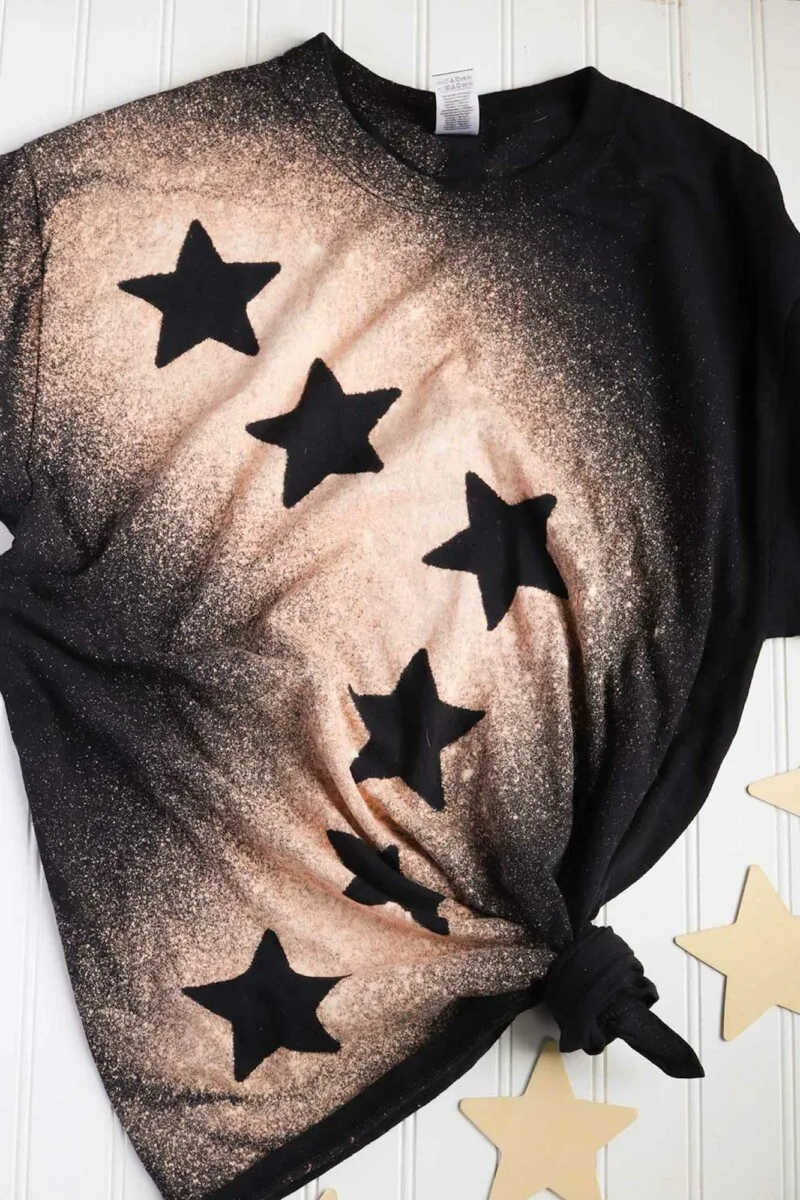
Bleach dyeing a shirt is a great way to cover small stains that are on a favorite shirt!
This is a great idea for Halloween shirts! Choose a spooky pattern or cut-out and apply to a black t-shirt for an easy Halloween costume.
Be sure to see our guide to bleach tie dyeing a shirt, too.
Helpful Tips
Before choosing your clothing to spray bleach, keep these tips in mind:
- Black t-shirts are especially great for bleach spraying.
- Spray bleaching over a patterned shirt, such as a flannel shirt or t-shirt with a logo, will add an interesting look.
- Light-colored clothing, such as white or pastels, will not work great with this technique. You will not be able to see the pattern.
- Shirts aren’t the only items that can be spray bleached. Jeans, pants, fabric tote bags and hats can all be customized with spray bleaching.
- You do not need to dilute the bleach, but you can if you would like to.
- Bleach dyeing a shirt is best done outdoors in the sun! First, the bleach smell will not be as strong when applied outdoors. Second, you want the power of the sun to help bleach the shirt. It will go much faster and much better if you apply bleach in a sunny location instead of an area in shadows.
- Spraying bleach will discolor anything that the spray lands on. Don’t do this project on a windy day! Bleach spray can discolor the clothing you are wearing, a tablecloth underneath the t-shirt, or anything other porous surface.
- The shirt can turn a variety of colors before the final look is achieved, so don’t worry if the color is not what you expect in the first few minutes after bleaching.
- You don’t have to use wood cut-outs or patterns when spray bleaching. You can just use a drip or spot method to apply bleach in a mist for a splatter effect.
Spray Bleaching Shirts Tutorial
Supplies
- Black or dark-colored shirt
- Wood cut outs (or a vinyl stencil)
- Bleach
- Spray bottle
Directions
Step 1
Lay the shirt on a flat surface and protect the area to prevent the bleach from damaging the work surface. You can lay a plastic garbage bag or large piece of cardboard underneath the shirt.
You will need to protect the back side of the shirt from the bleach, too. Insert a piece of cardboard inside the shirt so that the spray bleach won’t seep through to the backside.
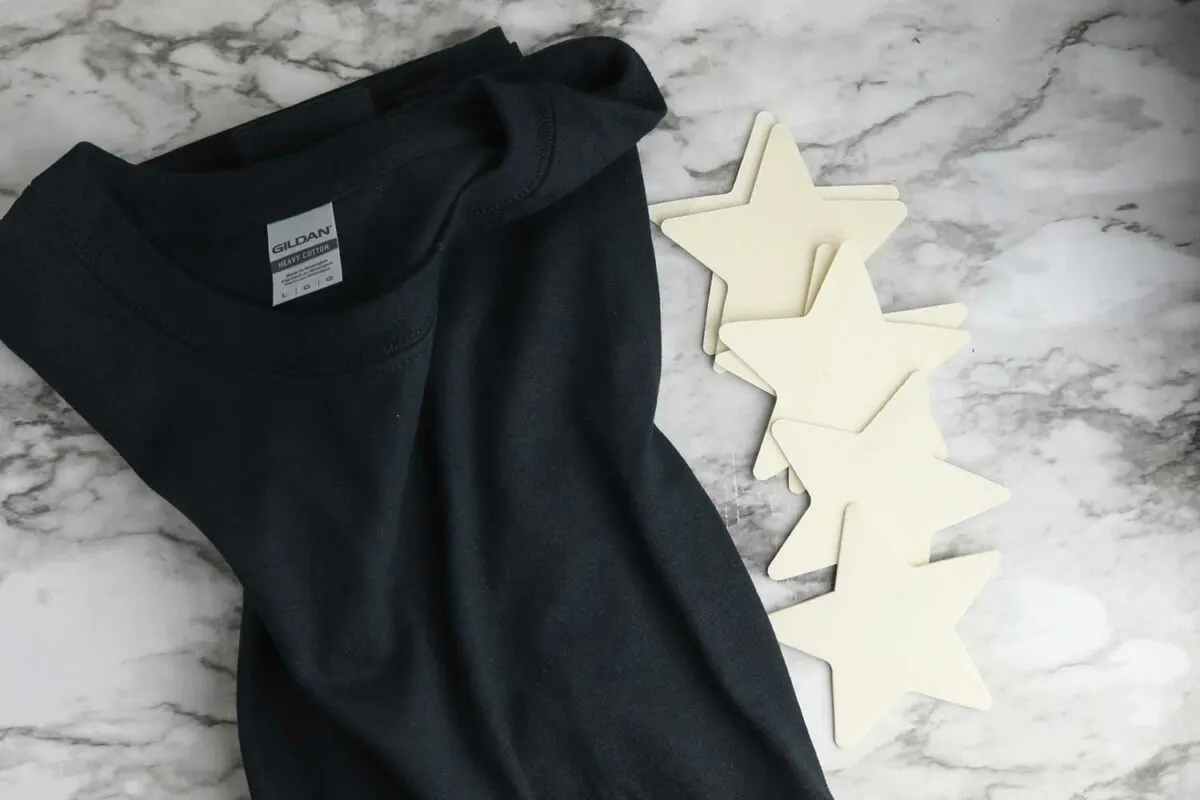
Step 2
Arrange the wood cutouts on top of the t-shirt in the design that you want. You will want to make sure that all of the designs are laid on the shirt at one-time.

Step 3
Pour the bleach into a spray bottle and lightly mist the bleach over the top of the wood cutouts.
Start with a very light spray of bleach first and see how it changes the color. You can always add another layer of bleach over the cut outs or pattern.
Make sure to not completely saturate the shirt. You just need a damp mist of bleach.
If you find that the bleach comes out in large drops or you over-sprayed, you can try to remove some of the bleach by blotting with a paper towel. Just protect your hands from any bleach exposure.
It is important to use the spray function on the nozzle, not the stream function! Make sure your spray bottle is set on the right function before adding the bleach.
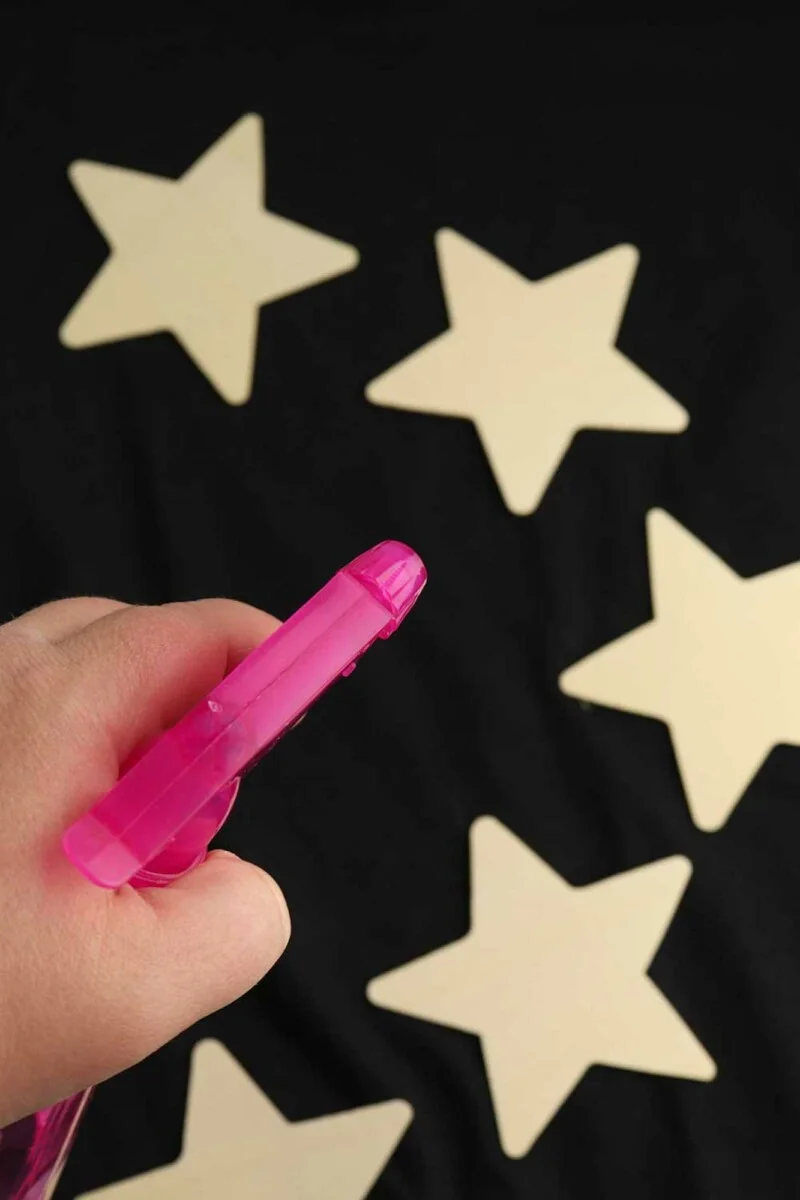
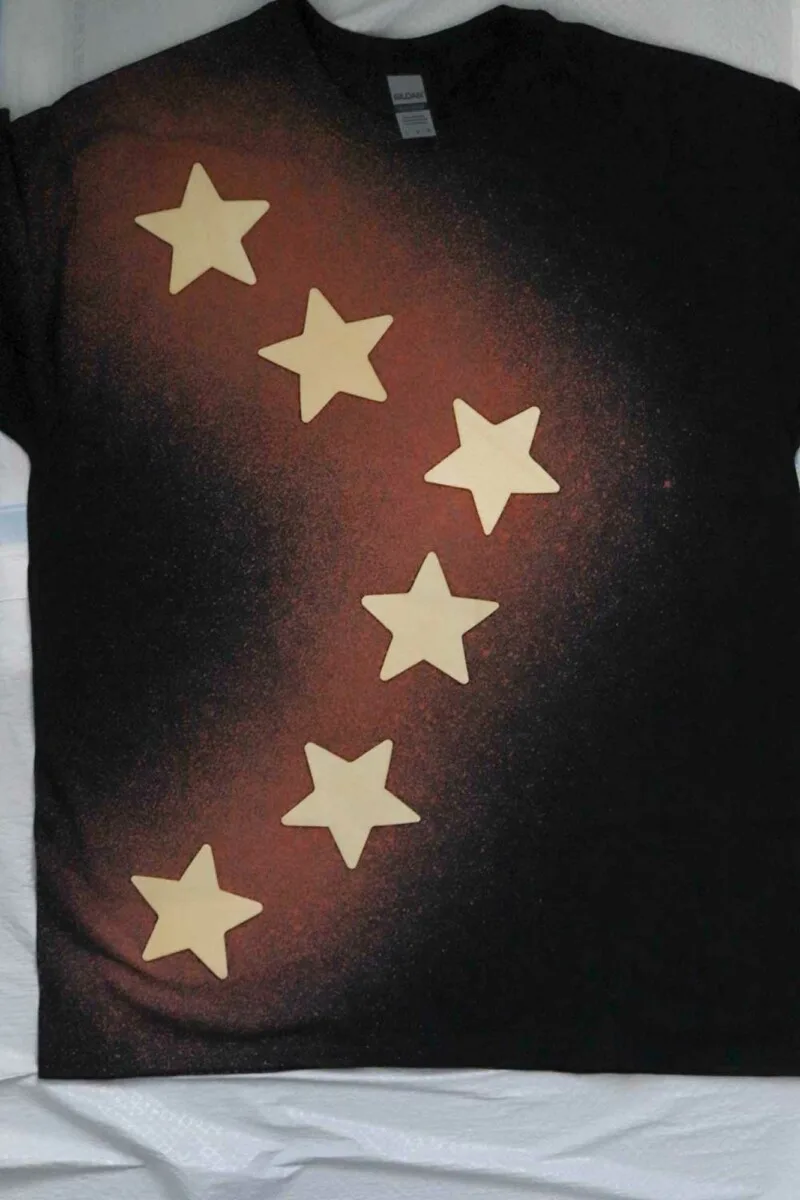
Step 4
Allow the bleach to dry completely, then remove the wood cutouts.
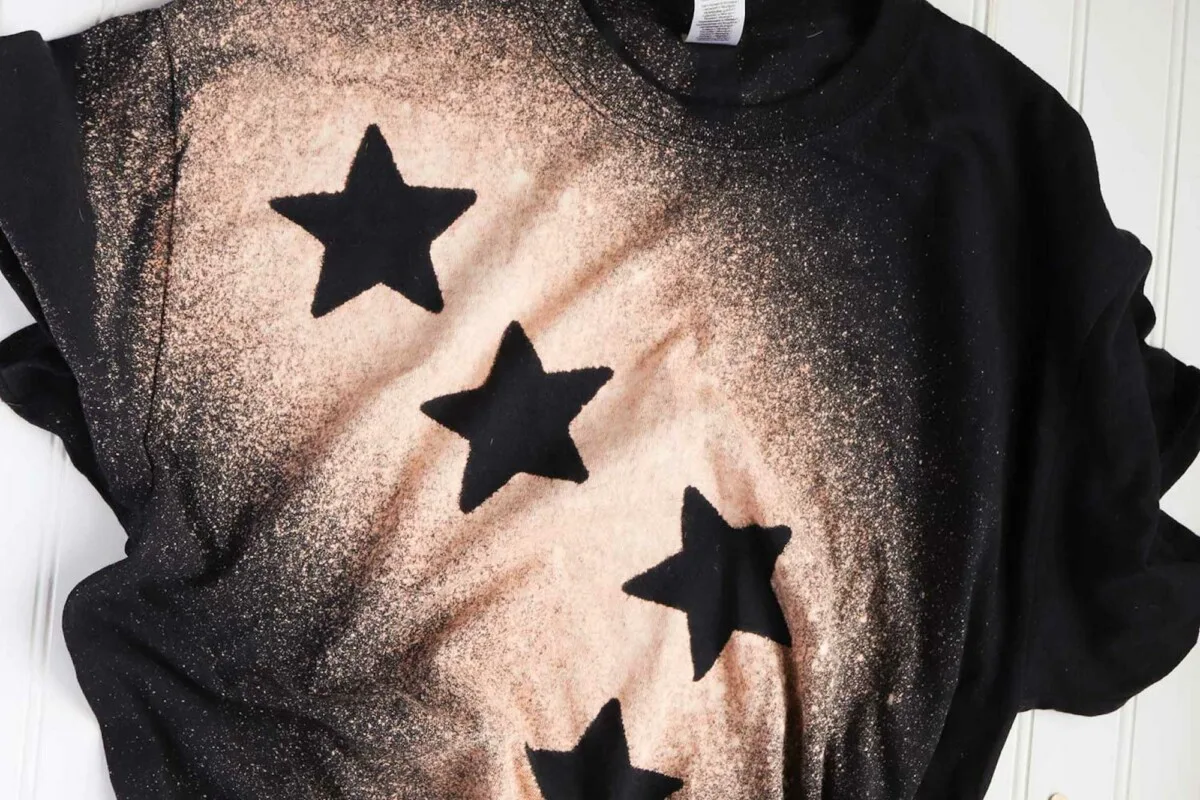
Rinse the shirt thoroughly in water and allow it to air dry. Then wash the shirt by itself in the washing machine on a normal cycle.
Best Spray Bottle for Bleaching Shirts
The best spray bottle to apply bleach is a glass bottle with an adjustable stream.
Bleach can eat away at plastic, so it is advisable to use a glass spray bottle when possible.
For a quick project, you can use a plastic spray bottle, especially one from the dollar store. Use the bottle to apply the bleach, then empty the bleach out of the bottle. You may not be able to use this bottle for other purposes, such as spraying fertilizer or misting plants with water, because of the bleach that will linger inside.
Regardless of which type of bottle you use, you don’t want to leave bleach in the bottle. The tube that leads to the nozzle can be damaged and eroded by the bleach.

